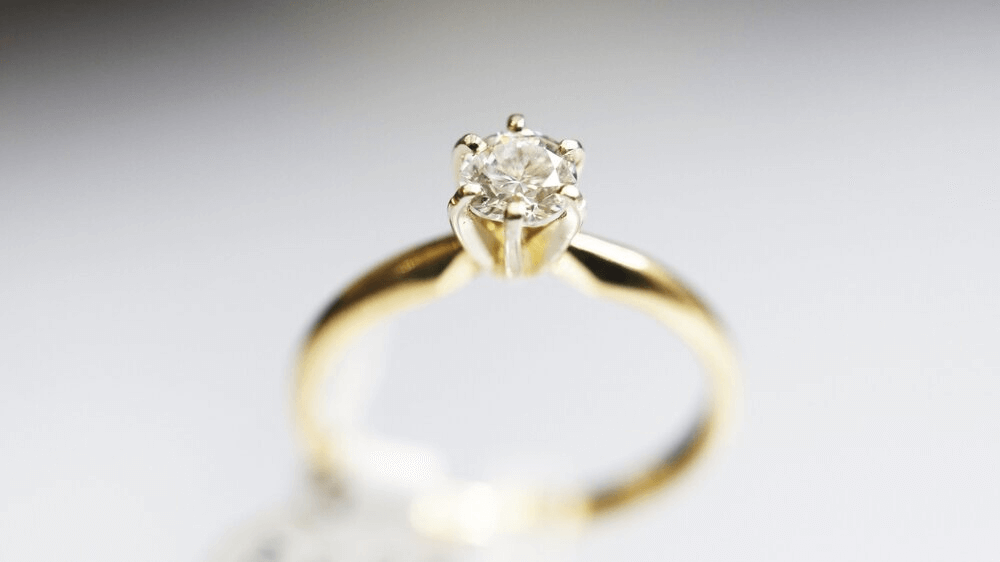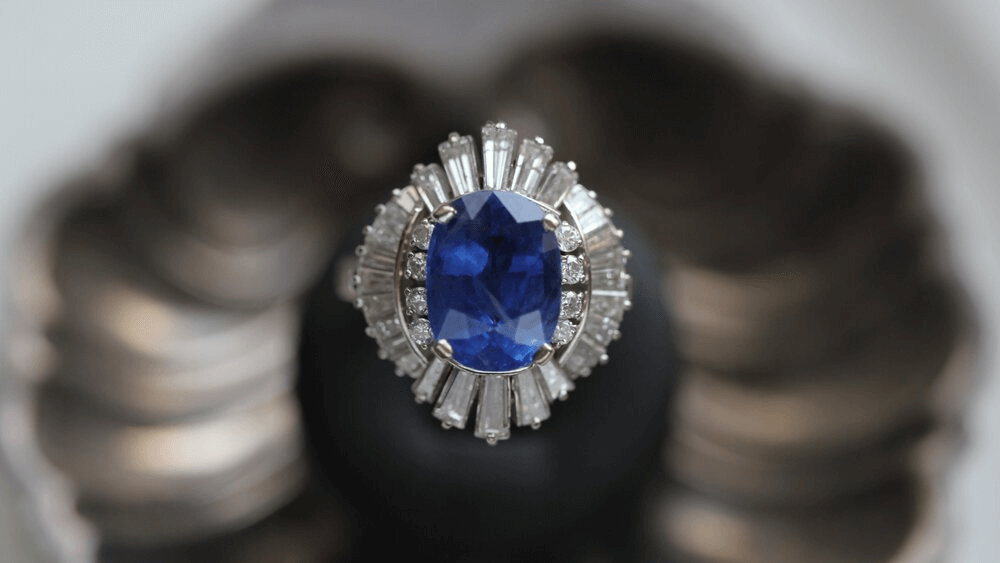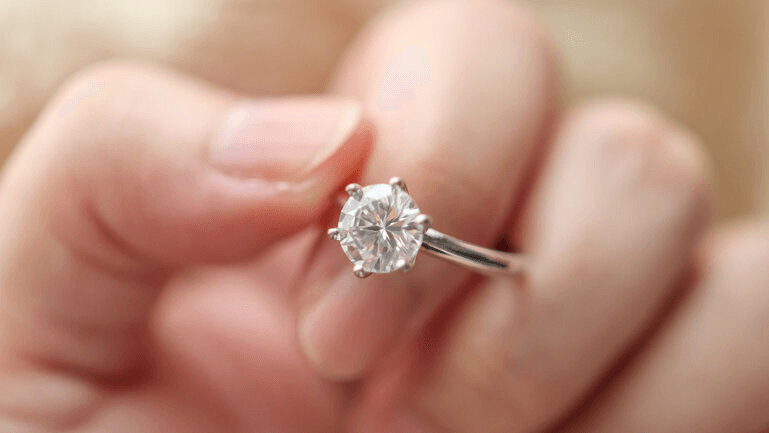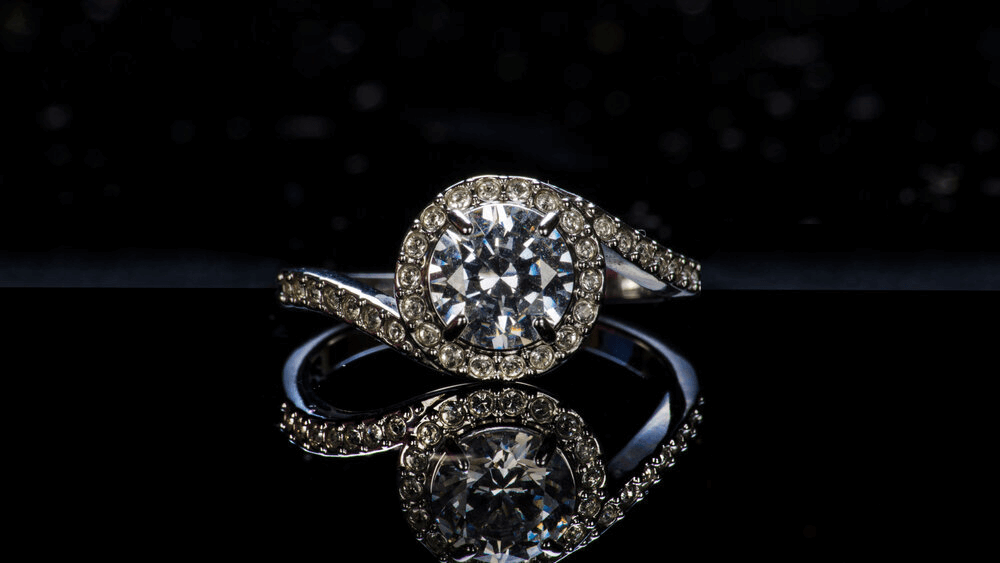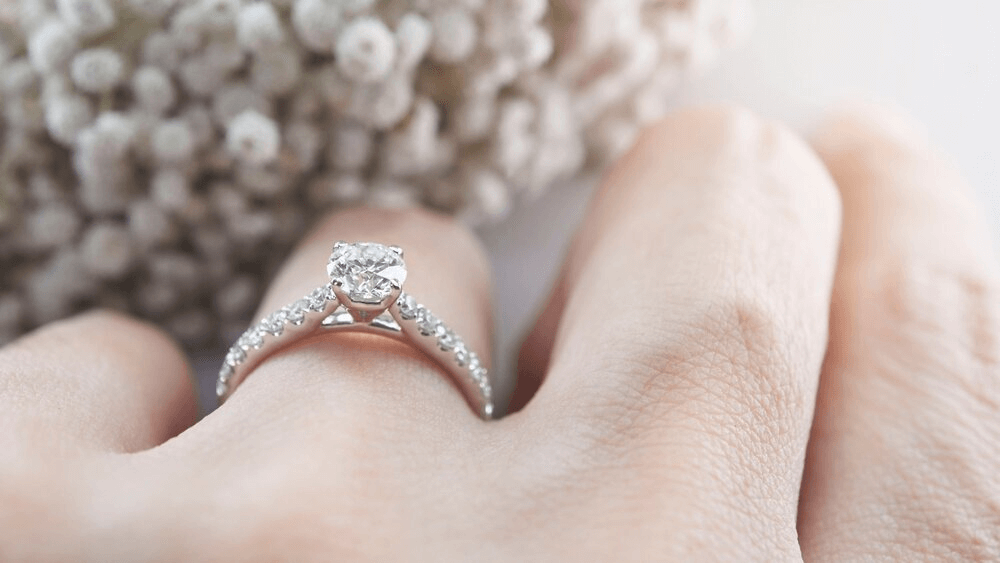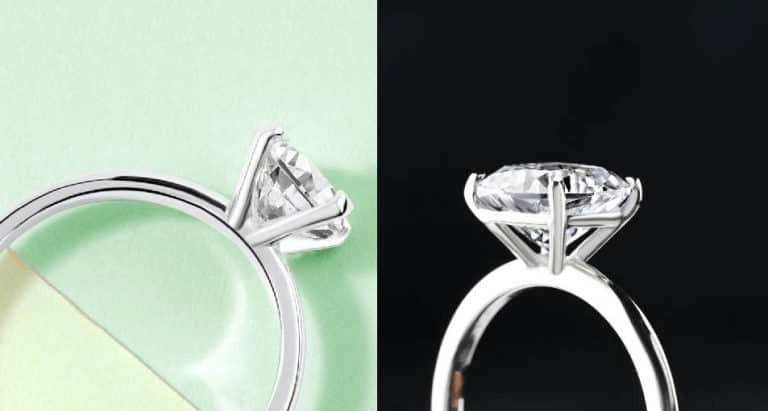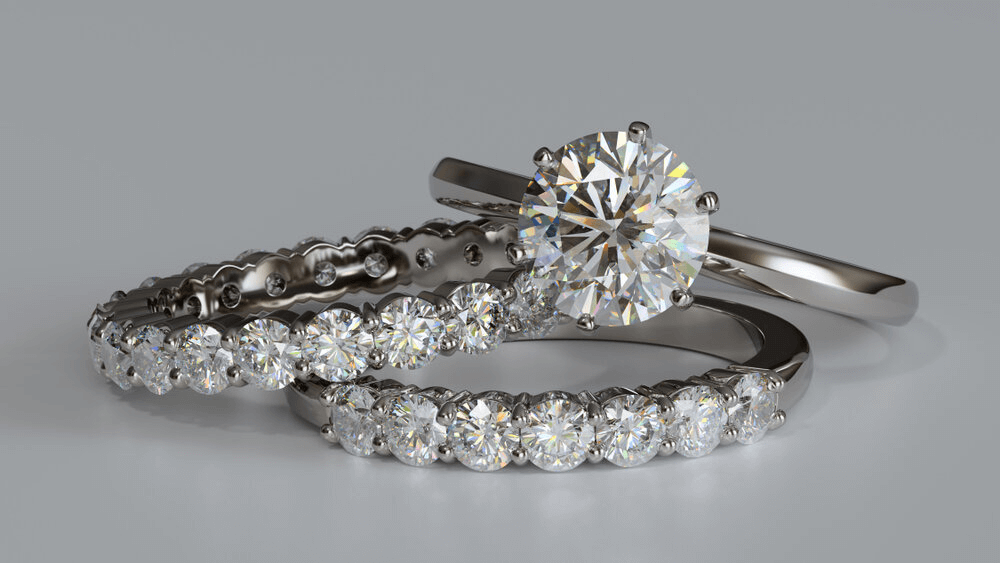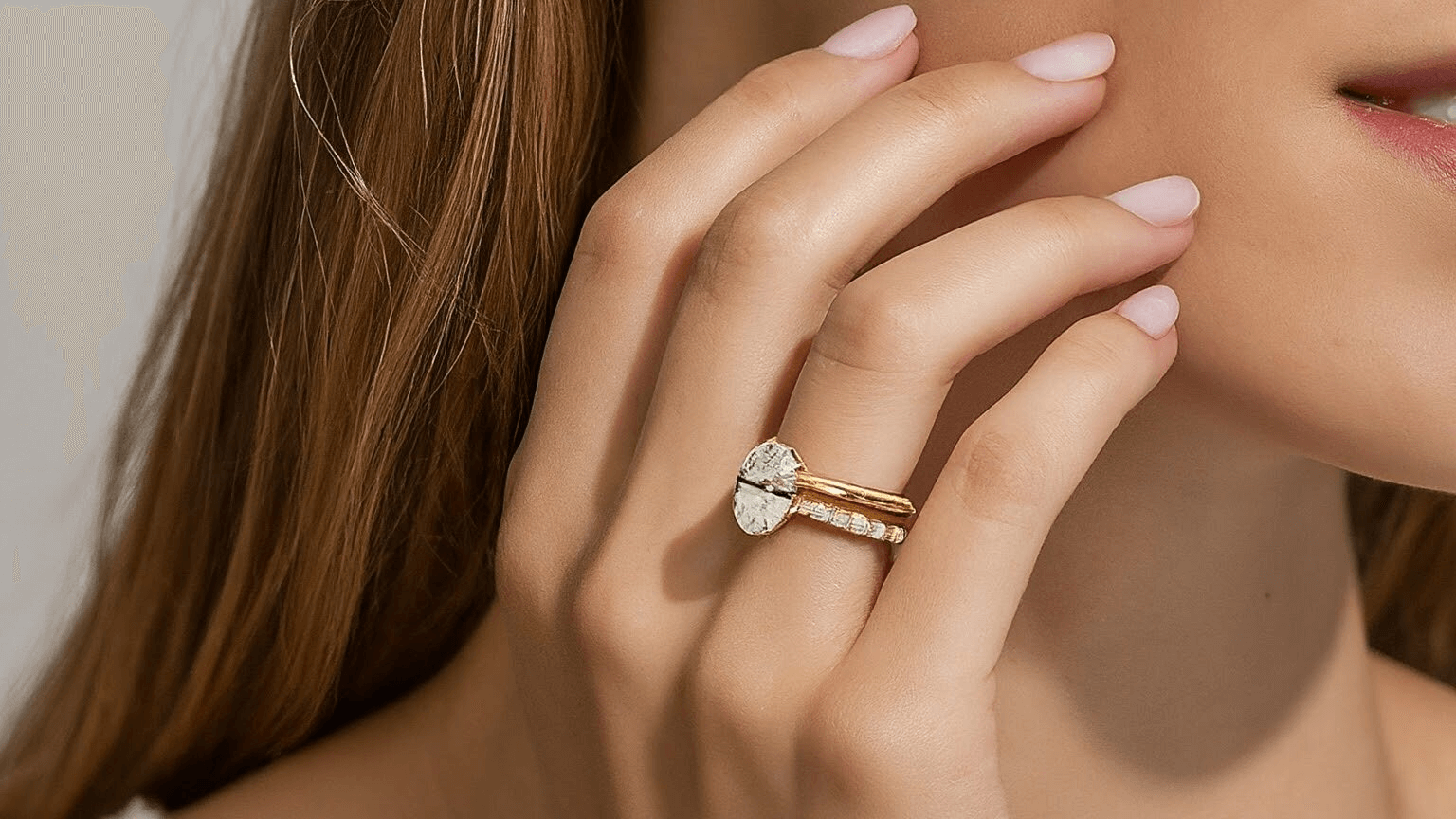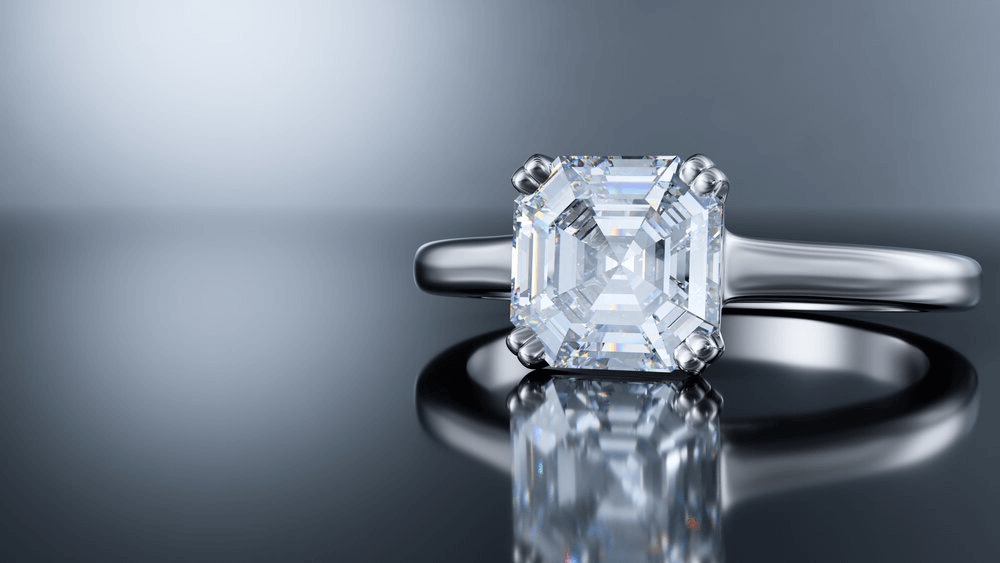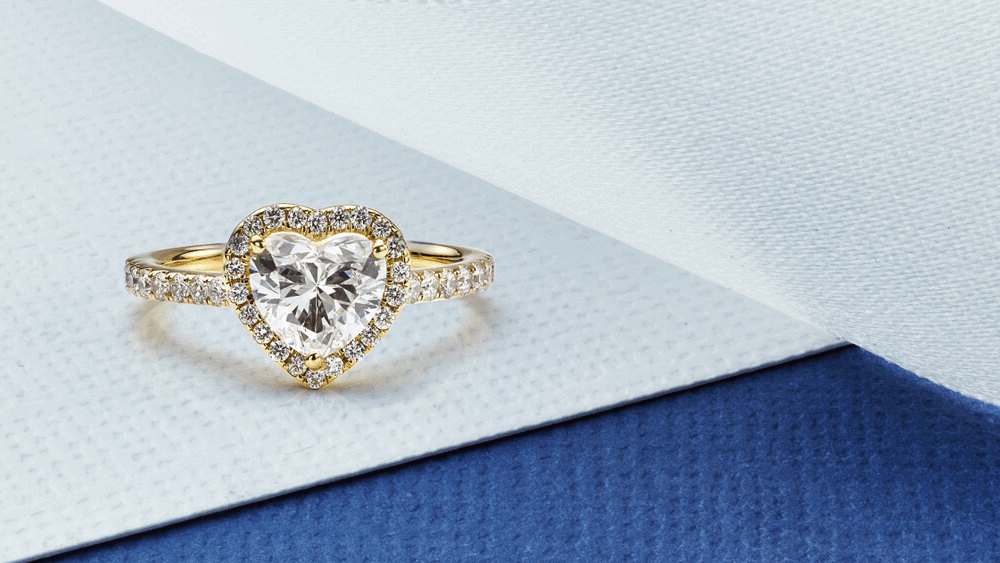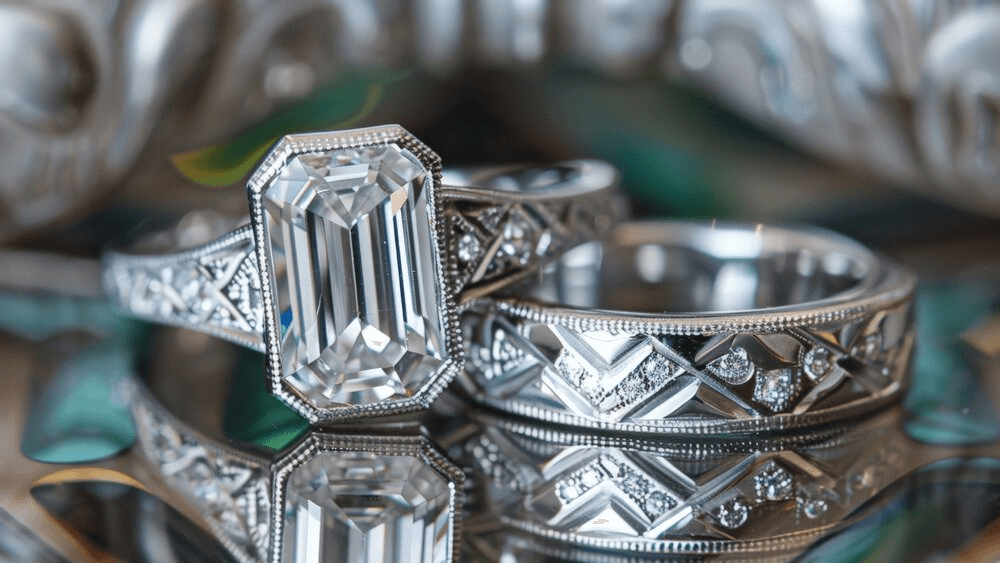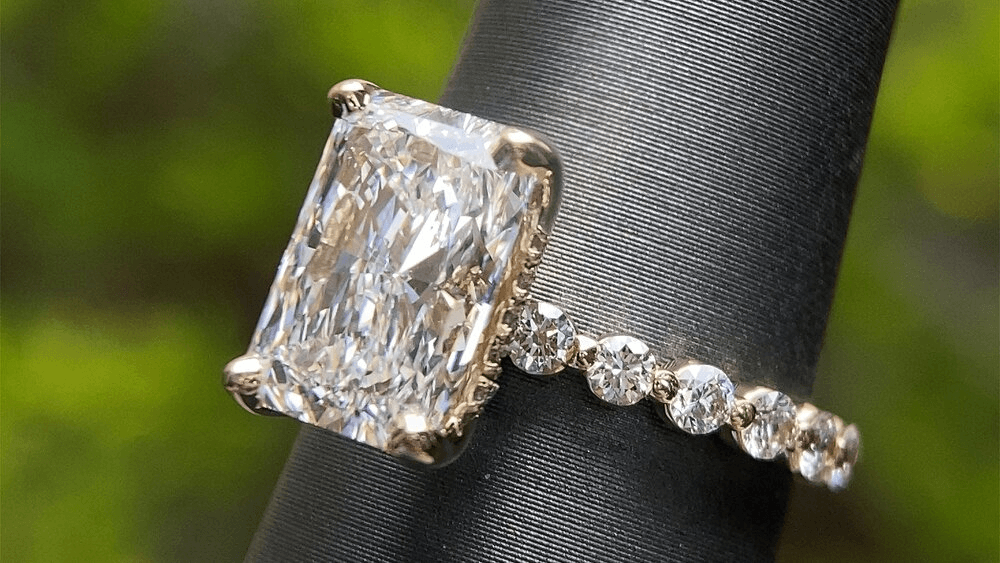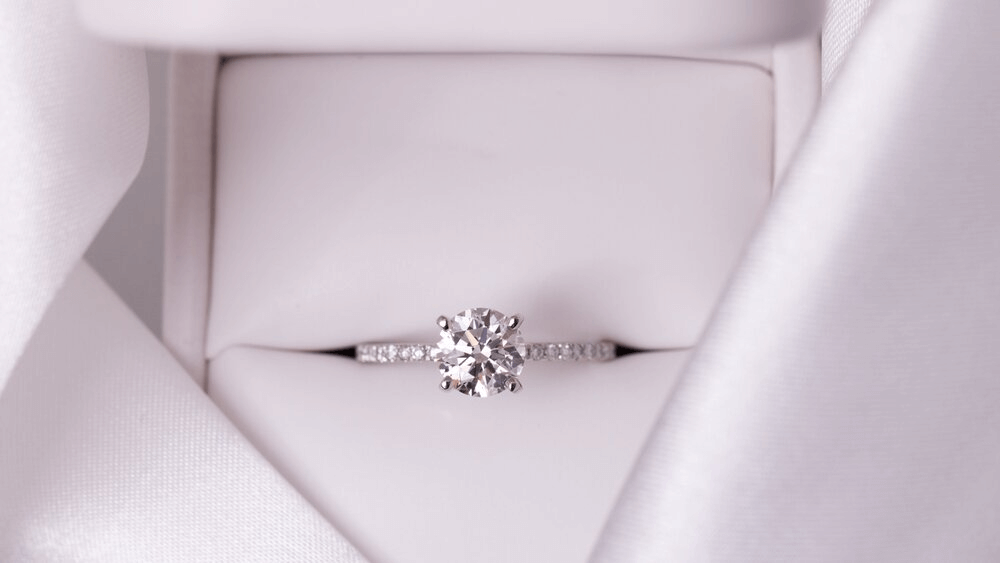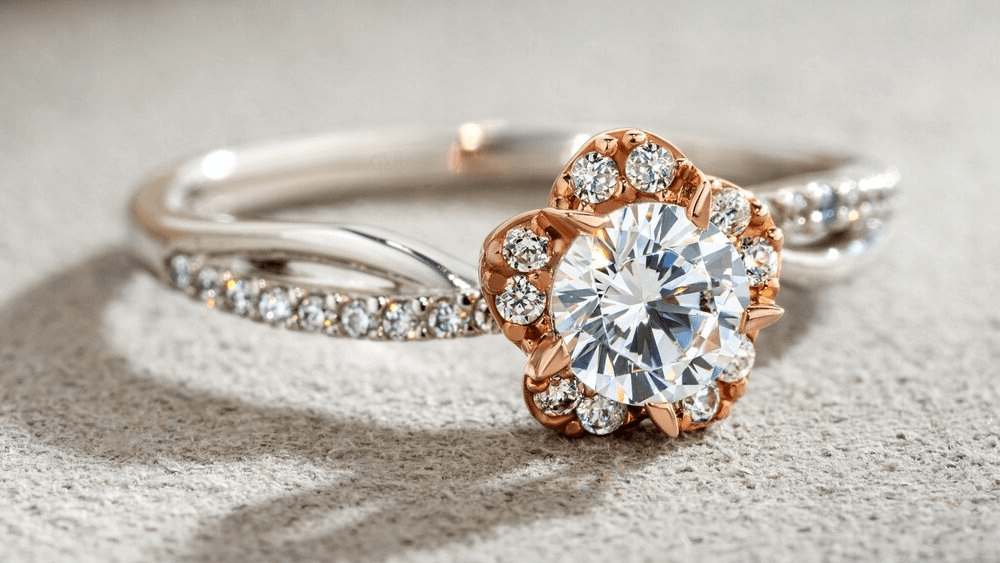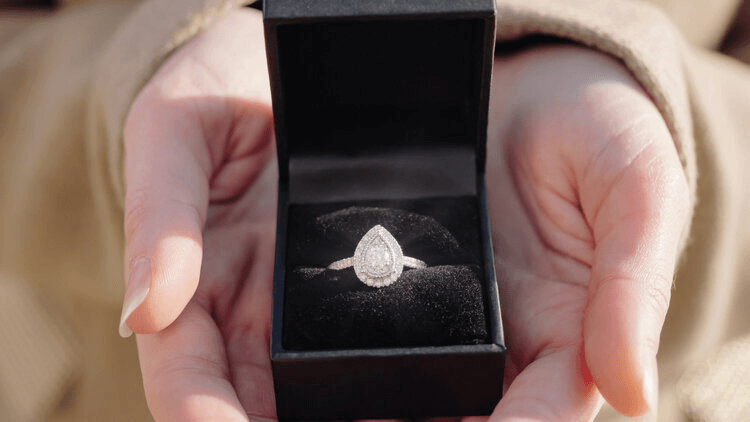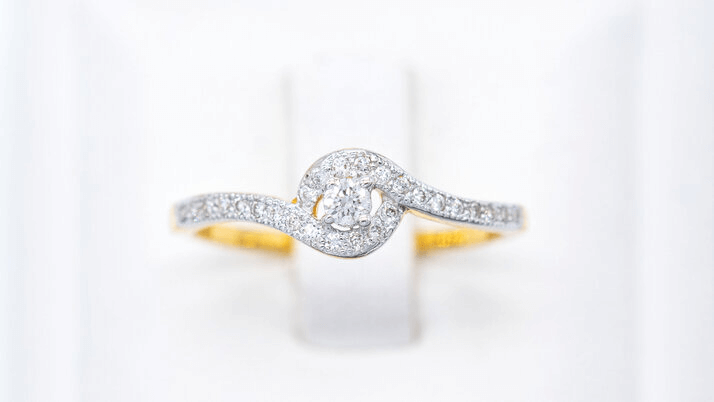Unlock the Magic of Marquise Engagement Rings

By Gary A.

Edited by Olivia H.
Published Aug 13, 2024
Edited on Mar 31, 2025
Marquise diamonds only exist because of the most passionate type of love there is. Here’s why so many choose to use them in their engagement rings.

Navigate this guide:
- 6 Quick Tips for Finding a Beguiling Marquise Diamond Engagement Ring
- Introduction to Marquise Cut Diamonds
- Selecting the Perfect Setting
- Considerations for Marquise Ring Settings
- Our Expert Take: Crafting Your Legacy
- 8 Frequently Asked Questions about Marquise Cut Engagement Rings
Before we dive deeper into the specifics, here are some practical tips to help guide your decision-making process:
6 Quick Tips for Finding a Beguiling Marquise Diamond Engagement Ring
Tip 1. Protect the Points:
- Marquise cuts have pointed ends which are prone to chipping or breaking. Select a setting, such as a V-end prong or bezel, that shields the points of the diamond, offering better protection to the vulnerable ends.
Tip 2. Symmetry is Key:
- Given the elongated shape of marquise diamonds, symmetry is crucial. Even a minor imbalance in the cut can make the diamond appear off-kilter once set, so examine the symmetry meticulously before finalizing the purchase.
Tip 3. Be Mindful of the Length-to-Width Ratio:
- The proportion of length to width affects the appearance of marquise diamonds significantly. A traditional ratio is about 2:1. However, preferences may vary, and some may prefer more elongated or more rounded shapes.
Tip 4. Choose the Right Setting:
- The right setting can accentuate the marquise cut’s elegance. A halo setting can make the diamond appear larger, while a prong setting can allow more light to enter the diamond, enhancing its brilliance. The setting should complement the diamond’s unique shape and your aesthetic preference.
Tip 5. Pay Attention to Color and Clarity:
- Marquise cuts tend to show color and inclusions more than other cuts due to their large table. Opt for higher color and clarity grades to ensure the diamond’s imperfections are not easily visible.
Tip 6. Watch out for the Bowtie Effect:
- Most marquise diamonds exhibit a bowtie effect—a dark area across the width of the diamond due to light leakage. Observe the diamond in various lighting conditions to see how noticeable the bowtie is, as a pronounced bowtie can detract from the diamond’s appearance.
Now that you’ve got these practical tips, use Jeweler AI below to find the perfect engagement ring that suits your style and budget:
Introduction to Marquise Cut Diamonds
The romance of history; it’s a hard spell not to fall under. This is part of the reason why diamonds are so seductive in the first place – but we’d argue it’s never more palpable than when you’re looking down at an impeccable, bright Marquise diamond.
Inspired by passion and fervor, this is a shape for any hopeless romantic…
Historical Elegance
When it comes to diamond shapes, the Marquise cut is a real showstopper with some serious royal pedigree. Picture this: 18th century France, King Louis XV, and a diamond commissioned to mirror the smile of his mistress, the Marquise de Pompadour. Talk about romantic! The result? That elegant, elongated shape we now know and love as the Marquise cut.
This isn’t just any old diamond shape – it’s a slice of history that’s graced the fingers of nobility and celebs alike. From royal coronations to Hollywood red carpets, the Marquise has been turning heads for centuries. And why wouldn’t it? With those pointed ends and that wide middle, it’s got a silhouette that screams luxury.
But don’t go thinking it’s all stuffy and old-fashioned. The Marquise cut has sailed smoothly into modern jewelry design, proving that true style never goes out of fashion.
Maximizing Carat Perception
Here’s a little secret: Marquise cuts are masters of illusion. Thanks to that elongated shape, they often look bigger than other diamonds of the same carat weight. It’s like magic for your finger! This optical trick makes the Marquise a top pick for couples looking to get the most bang for their buck. The shape draws your eye along its length, creating a “wow” factor that’s hard to beat.
Symmetry and Proportions
Alright, let’s get down to the nitty-gritty. When you’re picking out a Marquise cut, symmetry and proportion are your best friends. You want those points perfectly aligned and the wings balanced – think of it as the diamond equivalent of a perfectly symmetrical face.
The length-to-width ratio is another biggie. Typically, you’re looking at ratios between 1.75:1 to 2.25:1. It’s all about personal preference here – some like ’em long and lean, others prefer a bit more curve. Whatever floats your boat!
Selecting the Perfect Setting
How do you make a Marquise shine brighter? Give it the perfect home, of course…
Prong Settings: The Classic Choice
Prong settings are like the little black dress of the diamond world – timeless, versatile, and always in style. They typically use four to six prongs to keep your diamond snug and secure while letting in plenty of light. It’s like giving your Marquise its own personal spotlight!
The beauty of prong settings is their flexibility. Whether you’re going for a simple solitaire or something with a bit more pizzazz, prongs have got you covered. Just make sure those prongs are sturdy – you don’t want your precious Marquise making a break for it!
Bezel Settings: Modern Protection
For those of you with an active lifestyle (or just a tendency to bump into things), bezel settings are your new best friend. Picture your Marquise surrounded by a thin metal rim – it’s like a fortress for your finger! This setting not only keeps your diamond safe but also adds a sleek, modern touch.
Bezel settings are great at highlighting the Marquise’s unique shape. It’s like putting a frame around a masterpiece – it just makes everything pop. Plus, you won’t have to worry about snagging your sweater on any pointy prongs. Win-win!
Halo Settings: Amplifying Brilliance
If you’re all about that extra sparkle (and let’s be honest, who isn’t?), halo settings are where it’s at. Imagine your Marquise diamond surrounded by a ring of smaller diamonds – it’s like having your own personal entourage of sparkle!
Halos are great at making your center stone look even bigger (as if the Marquise needed any help in that department). Plus, you can get creative with different shapes and sizes for the halo. It’s a great way to add your own personal flair to a classic design.

Unique Settings for Marquise Diamonds
Ready to really make a statement? Consider thinking outside the box with your Marquise. How about setting it east-west across the band for a modern twist? Or try a split shank setting for some added drama.
And don’t be afraid to play with color! Mixing in some colored gemstones or playing with different metal tones can take your ring from beautiful to absolutely breathtaking. After all, your ring should be as unique as you are!

Considerations for Marquise Ring Settings
If your partner is active, they may prefer more secure settings like bezels or low-profile prongs that protect the diamond while withstanding daily activities. For those who favor bold and intricate designs, settings with detailed metalwork or side stones can enhance the overall aesthetic.
Marquise cut diamonds can exhibit color more readily due to their shallow depth, so it’s important to choose a diamond with a high color grade. Aim for a near-colorless grade (G-H) to ensure the diamond appears bright and white. Clarity is also crucial, as inclusions can be more visible in this cut. Look for diamonds with clarity grades of SI1 or better to minimize visible flaws and enhance the diamond’s overall appearance.
The Bowtie Effect: Minimizing Visual Impact
Ah, the dreaded bowtie effect – that dark shadow across the center of the diamond that can be the bane of Marquise cuts. While it’s almost impossible to eliminate entirely (even diamonds aren’t perfect!), choosing a well-proportioned stone with excellent symmetry can help keep it in check.
Pro tip: check out your diamond in different lighting before you buy. It’s like test-driving a car – you want to make sure it looks good in all conditions!
Our Expert Take: Crafting Your Legacy
Let’s face it – the Marquise cut is not your average diamond. It’s got history, it’s got flair, and it’s got that unmistakable edge that sets it apart from the crowd. Whether you’re drawn to its royal roots, its ability to look larger than life, or just its downright uniqueness, the Marquise is a cut that demands attention.
From classic prong settings to modern bezels, from dazzling halos to out-of-the-box designs, there’s a Marquise ring out there for every style and personality. It’s all about finding that perfect balance of cut, color, clarity, and setting that makes your heart skip a beat.
Remember, choosing an engagement ring isn’t just about following trends – it’s about finding a piece that speaks to you, that tells your unique love story. And if that story happens to involve a diamond that looks like it was plucked straight from a royal crown? Well, that’s just the cherry on top.
So go ahead, give the Marquise a chance. Who knows? You might just find yourself falling head over heels for this regal beauty. After all, if it’s good enough for French royalty, it’s certainly good enough for your finger!
8 Frequently Asked Questions about Marquise Cut Engagement Rings
- 1. What makes a marquise cut engagement ring unique?
- A marquise cut engagement ring features an elongated, boat-shaped diamond with pointed ends. Its distinctive shape maximizes carat weight, making the diamond appear larger and giving the ring an elegant, slender appearance.
- 2. How should the points of a marquise diamond be protected?
- The points of a marquise diamond should be protected with a setting that guards against chipping, such as V-end prongs or a bezel setting, to ensure the longevity and durability of the ring.
- 3. What is the ideal length-to-width ratio for a marquise diamond?
- The ideal length-to-width ratio for a marquise diamond is typically considered to be about 2:1. However, personal preference plays a significant role, and some may prefer a more elongated or wider shape.
- 4. How does the setting enhance a marquise engagement ring?
- The right setting can enhance a marquise engagement ring by complementing its shape, protecting the diamond, and enhancing its brilliance. Popular settings include prong, halo, and bezel, each offering a unique look.
- 5. Why is symmetry important in a marquise cut diamond?
- Symmetry is crucial in a marquise cut diamond because any imbalance in the cut can make the diamond appear uneven and affect the overall aesthetics of the ring.
- 6. How can the color and clarity of a marquise diamond affect its appearance?
- Marquise cuts can show color and inclusions more readily due to their large table. Opting for higher color and clarity grades helps ensure that any imperfections are not easily visible, maintaining the diamond’s beauty.
- 7. What is the “bowtie effect” in marquise diamonds?
- The “bowtie effect” refers to a dark shadow that can appear across the center of a marquise diamond due to light leakage. Its visibility varies with each diamond and should be assessed in different lighting conditions to ensure it’s not overly prominent.
- 8. Can marquise diamonds be set in any style of ring?
- Marquise diamonds are versatile and can be set in various ring styles, including solitaire, halo, three-stone, and vintage-inspired settings, allowing for a wide range of personalized options.
Find the perfect Marquise Ring with Jeweler AI – Your journey to elegance begins here.
FOLLOW-UP GUIDE SERIES





